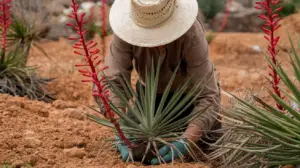Welcome to the world of pamacrystial plant care. These succulents are special and have unique needs. They thrive in dry areas in Africa and the Americas. This makes them perfect for indoor spaces, great for both new and experienced plant lovers.
They love bright, indirect light and need water only every two to three weeks. This helps keep the air in your home clean and healthy. Learning to care for pamacrystial plants is easy and fun.
Table of Contents
Introduction to Pamacrystial Plants
Pamacrystial plants are known for their striking looks and toughness. They belong to the succulent family and are part of the genus Pamacrystialis. These plants are native to dry and semi-dry areas, mainly in Africa and the Americas.
They can store water, which helps them grow well in low light. This makes them perfect for adding beauty to your home.
These plants grow in a beautiful rosette shape. New leaves come out from the center. They bloom from late spring to early summer, adding color to any room.
Not only do they look good, but they also clean the air. This makes them great for improving your home’s atmosphere.
To care for pamacrystial plants, water them every two to three weeks. Adjust to your home’s humidity and temperature. Plant them in soil made for succulents or cacti to avoid root rot.
With their beauty and benefits, pamacrystial plants are loved by many gardeners. They are among the best low-light plants out there.
Origin and Characteristics of the Pamacrystial Plant
The Pamacrystial plant comes from the dry lands of Africa and the Americas. These plants are built to thrive in tough conditions with little water. They have thick leaves that store water, helping them survive and making them great for dry places.
The leaves of the Pamacrystial plant are quite special. They come in different shapes and colors, adding to the plant’s beauty. The plants can grow in many ways, from small and compact to tall and sprawling. This variety makes them a favorite among gardeners who want something beautiful and tough.
The flowers of the Pamacrystial plant are also noteworthy. They are often bright and colorful, adding to the plant’s appeal. Their ability to bloom in dry conditions makes them a standout choice for gardens. They not only look great but also grow well in tough environments.
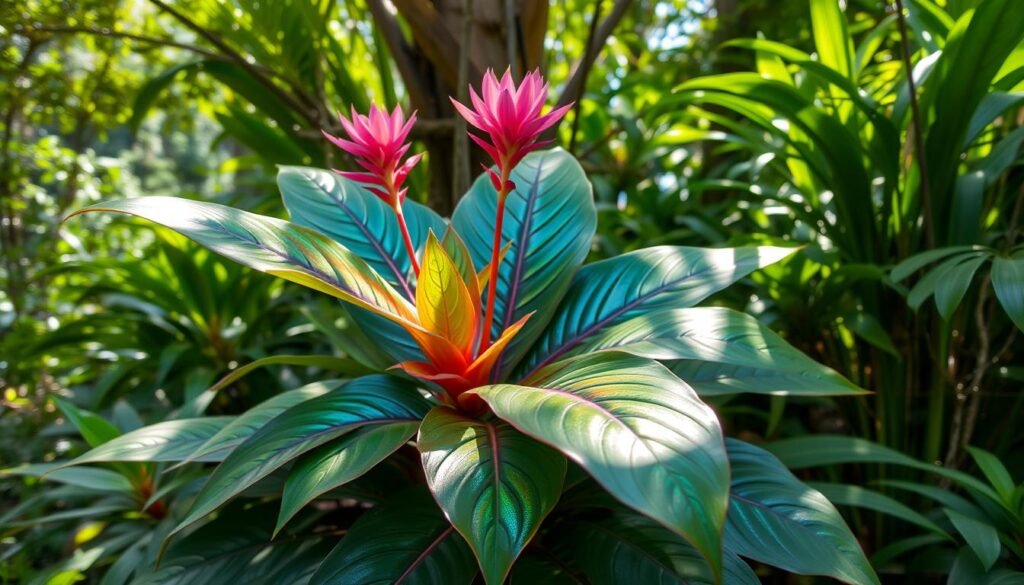
Why Choose the Pamacrystial Plant for Your Home?
Choosing the Pamacrystial plant for your home brings many benefits. It’s easy to care for, making it great for busy people or gardening newbies. Its vibrant colors and unique shapes add beauty to any room.
Pamacrystial plants are versatile in home decoration. They fit well in modern spaces or cozy corners. Their leaf colors, like green, purple, and red, add warmth and personality.
These plants are also good at purifying the air. They help remove harmful toxins, making your home healthier. Adding them to your decor improves your well-being.
The Pamacrystial plant loves bright, indirect light. It’s perfect for indoor or outdoor spaces. With proper watering and soil, caring for it is easy. This lets you enjoy its beauty with minimal effort.
Pamacrystial Plant Care Essentials
Caring for your pamacrystial plant means knowing its needs. You need to water it right, give it the right light, and pick the best containers. Learning these basics will help your pamacrystial thrive at home.
Understanding the Needs of Pamacrystial Plants
Pamacrystial plants come from dry places, so they’re easy to care for. Water them every two to three weeks. Watch out for humidity and temperature changes to prevent root rot.
Lighting is key for their health. These plants also clean the air, making your home healthier. They can grow well in many environments.
Choosing the Right Containers
Choosing the right container is important for pamacrystial plants. You need containers that let water drain to avoid too much water. Pick pots with holes and use a mix made for succulents or cacti.
These tips help your pamacrystial grow strong roots. It will flourish with the right care.
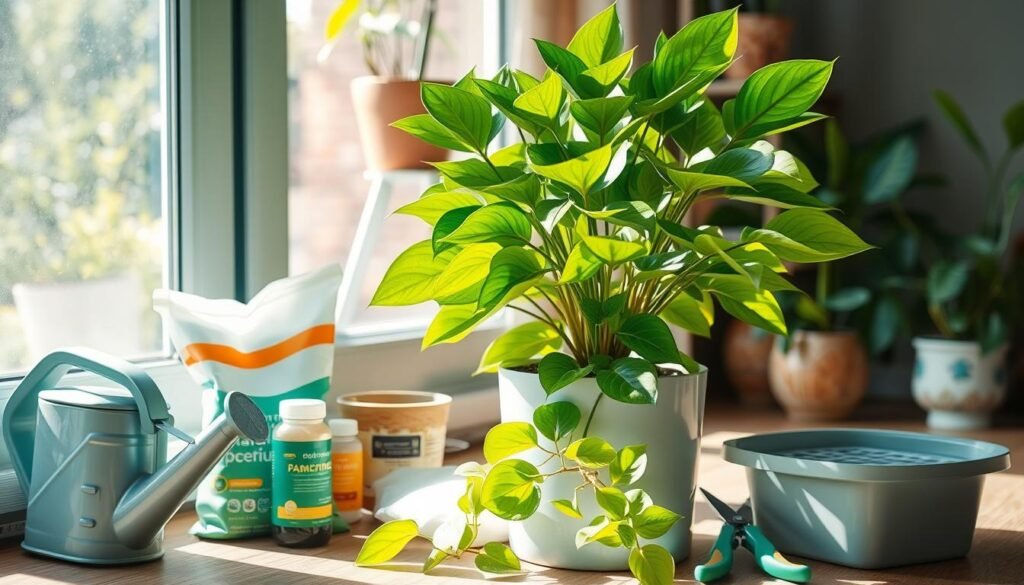
Light Requirements for Thriving Growth
Knowing what light your pamacrystial plant needs is key to its health. They do best in bright, indirect light. They can handle some direct sunlight in the morning but should avoid harsh afternoon sun. Moving them between indoors and outdoors can greatly affect their health.
Optimal Light Conditions
Pamacrystial plants need specific light to grow well. Bright, indirect light helps them photosynthesize like they do in nature. Here are some important tips for the best light:
- Bright, indirect light is ideal for healthy growth.
- Morning sun exposure can be beneficial; avoid intense afternoon sunlight.
- In low-light places, grow lights can help meet their needs.
Adjusting Light for Indoor vs Outdoor Settings
Adjusting light for indoor vs outdoor settings is important. Indoors, put your plant near east- or west-facing windows. Outdoors, choose a spot with filtered sunlight or partial shade. Here are some tips for both settings:
- Indoors, rotate your plant every few weeks for even light.
- Outdoors, slowly get your plant used to more light to avoid shock.
- Watch for signs of stress, like scorched leaves or leggy growth, which mean they need more light.
Watering Techniques for Pamacrystial Plants
Watering is key to your pamacrystial plant’s health. Finding the right balance between wet and dry is important. Knowing how to care for your plant ensures it thrives. Here are some essential tips.
Finding the Right Balance
Pamacrystial plants need careful watering. Water them every two to three weeks, depending on your home’s humidity and temperature. Use a well-draining mix to prevent root rot. Always check the soil moisture before watering to avoid stressing your plant.
Signs of Overwatering vs. Underwatering
Knowing the signs of overwatering and underwatering is vital. Overwatering signs include yellow leaves and mushy stems. This means the roots are too wet. Wait until the soil is dry before watering again.
Underwatering signs are wilting leaves and dry, cracked soil. This means your plant needs water. Start watering regularly to balance it out.
Soil and Fertilization for Pamacrystial Plants
To make your pamacrystial plant happy, picking the right soil and fertilizing it is key. The right soil mix ensures good drainage and nutrients for strong growth. A mix that drains well is best because it keeps roots dry, avoiding root rot.
Best Soil Mix for Pamacrystial Growth
The best soil for pamacrystial plants has elements that help with drainage and air. Here’s a simple mix:
- 1 part potting soil
- 1 part perlite
- 1 part coarse sand
This mix creates a safe space for your plant. It helps roots grow well and lets water drain out.
When and How to Fertilize
For your plant to grow well, follow these fertilizing tips:>
- Fertilize once a month from spring to early fall.
- Use a diluted, balanced fertilizer to avoid too many nutrients.
- Water the plant before fertilizing to prevent damage.
Following this fertilizing plan gives your plant the nutrients it needs. It keeps your plant healthy and thriving.
Pest Management in Pamacrystial Plant Care
Keeping pamacrystial plants healthy means watching out for pests. Pests can harm your plants’ growth and health if not caught early. Spotting pests quickly helps you use the right control methods to keep your plants thriving.
Common Pests to Watch Out For
When you care for pamacrystial plants, watch for these pests:
- Mealybugs – These pests suck plant sap, causing leaves to wilt and turn yellow.
- Aphids – Aphids reproduce fast, stunting plant growth and leaving a sticky mess that attracts mold.
- Spider Mites – Spider mites are tiny and hard to see. They make webs and speckles on leaves, showing they’re eating the plant.
- Scale Insects – Scale insects attach to stems and leaves, sucking the plant’s life away.
Effective Treatment Options
Using pest management techniques is key to your plants’ health. Here are some effective treatments:
- Insecticidal Soap – A gentle option for indoor use, it kills soft-bodied insects without harming the plant much.
- Neem Oil – This natural pesticide stops pests from reproducing, keeping your plants safe.
- Regular Inspections – Check your plants often for pests to catch problems early.
- Quarantine New Plants – Keep new plants separate for a few weeks to stop pests from spreading.
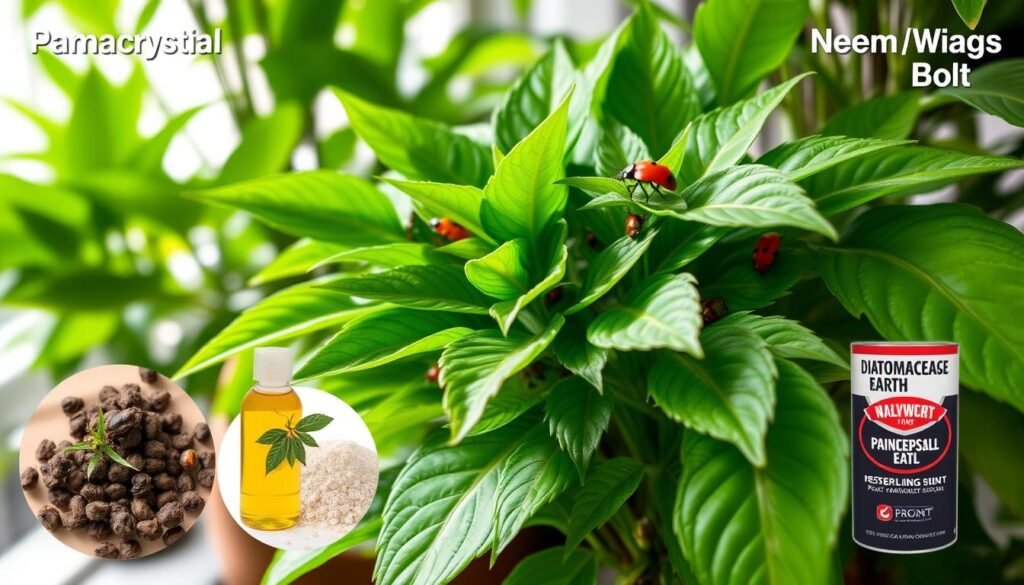
Prevention is a big part of keeping pamacrystial plants pest-free. Healthy plants are less likely to get pests. Good care practices help a lot.
| Pest | Symptoms | Treatment Options |
|---|---|---|
| Mealybugs | Wilting, yellowing leaves | Insecticidal soap, neem oil |
| Aphids | Stunted growth, sticky residue | Insecticidal soap, predatory insects |
| Spider Mites | Webbing, leaf speckling | Neem oil, increased humidity |
| Scale Insects | Yellowing leaves, stunted growth | Manual removal, insecticidal soap |
Pruning and Maintenance Tips
Keeping your pamacrystial plant healthy needs careful attention, mainly in pruning. Regular trimming boosts new growth and keeps the plant looking great. Knowing the best pruning techniques and when to do it is key to plant care. With the right care, your plant will thrive, making any space better.
How and When to Prune
Prune your pamacrystial plant during its active growing season, usually in late spring or early summer. This is when it responds best to cuts and quickly recovers. Remove dead, wilted, or crowded leaves. Cut just above a node to encourage more growth.
Check your plant monthly to keep it neat and healthy.
Maintaining Plant Shape and Health
Watch your pamacrystial plant closely to keep its shape healthy. Adjust pruning based on its growth. If growth is uneven or branches are too long, trim them to promote a fuller shape.
Good care also means regular watering and fertilizing. This supports strong growth. Regular pruning boosts your plant’s health and beauty.
Propagation Methods for Pamacrystial Plants
Expanding your pamacrystial plant collection is rewarding. You can use leaf cuttings and offsets propagation to grow more plants. These methods are easy and help you multiply your plants quickly.
Using Leaf Cuttings
Leaf cuttings are a popular way to grow pamacrystial plants. Here’s how to do it:
- Pick a healthy leaf from a mature plant.
- Use a clean knife to cut the leaf from the stem at the base.
- Let the leaf dry for a few days to form a callus.
- After a callus forms, plant the cutting in well-draining soil.
- Water lightly and place in bright, indirect light.
- Watch for growth; roots should appear in a few weeks.
Propagating Offsets
Offsets are great for growing pamacrystial plants, as jade plants often produce them. Here’s how to propagate offsets:
- Find healthy offsets at the base of your plant.
- Use a sharp knife to separate the offsets from the parent plant.
- Let the cut dry for a few days to form a callus.
- Plant the offsets in well-draining soil.
- Keep them moist and place in bright, indirect light.
- Roots should develop in a few weeks, creating a new plant.
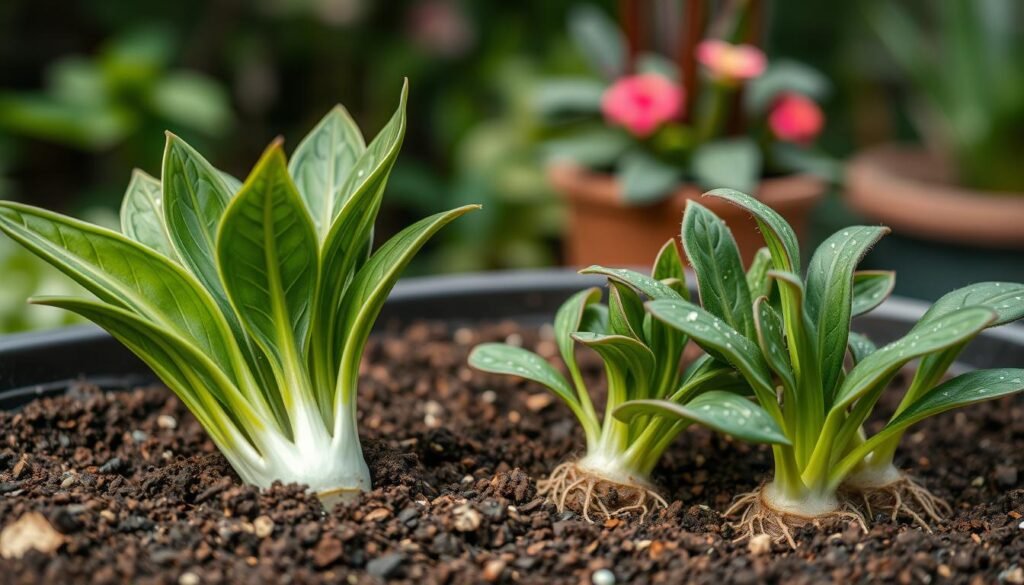
Using these methods can make your indoor garden better. With the right care, your new plants will grow well. Propagating pamacrystial plants is a fun hobby that adds to your collection.
Common Problems and Troubleshooting
Keeping your pamacrystial plants healthy means tackling common issues. Problems like overwatering, root rot, and yellow leaves can be fixed early. This ensures your plants stay vibrant and healthy.
Overwatering and Root Rot
Many face the challenge of overwatering their pamacrystial plants. This can cause root rot, where roots turn brown and mushy. It’s vital to check the soil moisture regularly to avoid this. Here are some tips:
- Water every two to three weeks, letting the top inch of soil dry out first.
- Make sure pots have holes to let water drain out.
- Watch for signs like yellow leaves and soft stems, which mean root rot.
How to Address Yellowing Leaves and Other Issues
Yellow leaves often mean there’s a problem. It could be because of too much water or not enough light. Here’s how to fix it:
- Check if your plant gets enough light. Move it if it’s too dark.
- Look at how often you water. Make sure the soil drains well.
- Keep an eye on the humidity. Aim for about 50% to help your plant grow well.
Regular checks can help spot problems early. By knowing how to handle common issues, you can keep your pamacrystial plant thriving. This will make your indoor space even better.
| Common Issue | Symptoms | Solutions |
|---|---|---|
| Overwatering | Yellowing leaves, mushy stems | Reduce watering frequency, ensure drainage |
| Root Rot | Brown, mushy roots | Remove affected roots, repot in dry soil |
| Insufficient Light | Leggy growth, yellowing leaves | Relocate to brighter area or trim stems |
Conclusion
Pamacrystial plant care is all about knowing what these plants need to thrive. You’ve learned how to give them the right light and water. This will help your pamacrystial plants grow strong and colorful.
These plants bloom in late spring to early summer. So, make sure to take extra care of them during this time. Following the best care tips will make your plants look their best.
Proper fertilization once a month during the growing season is key. This will boost your plants’ health and beauty. Also, knowing how to handle common problems like too much water and pests will keep your plants happy indoors or outdoors.
Starting your pamacrystial plant care journey is exciting. Try propagating them through leaf cuttings or offsets. It’s a fun way to grow more plants and share the joy with others. With these tips, you’re ready to grow a stunning collection of pamacrystial plants that will brighten up your space and clean the air.



